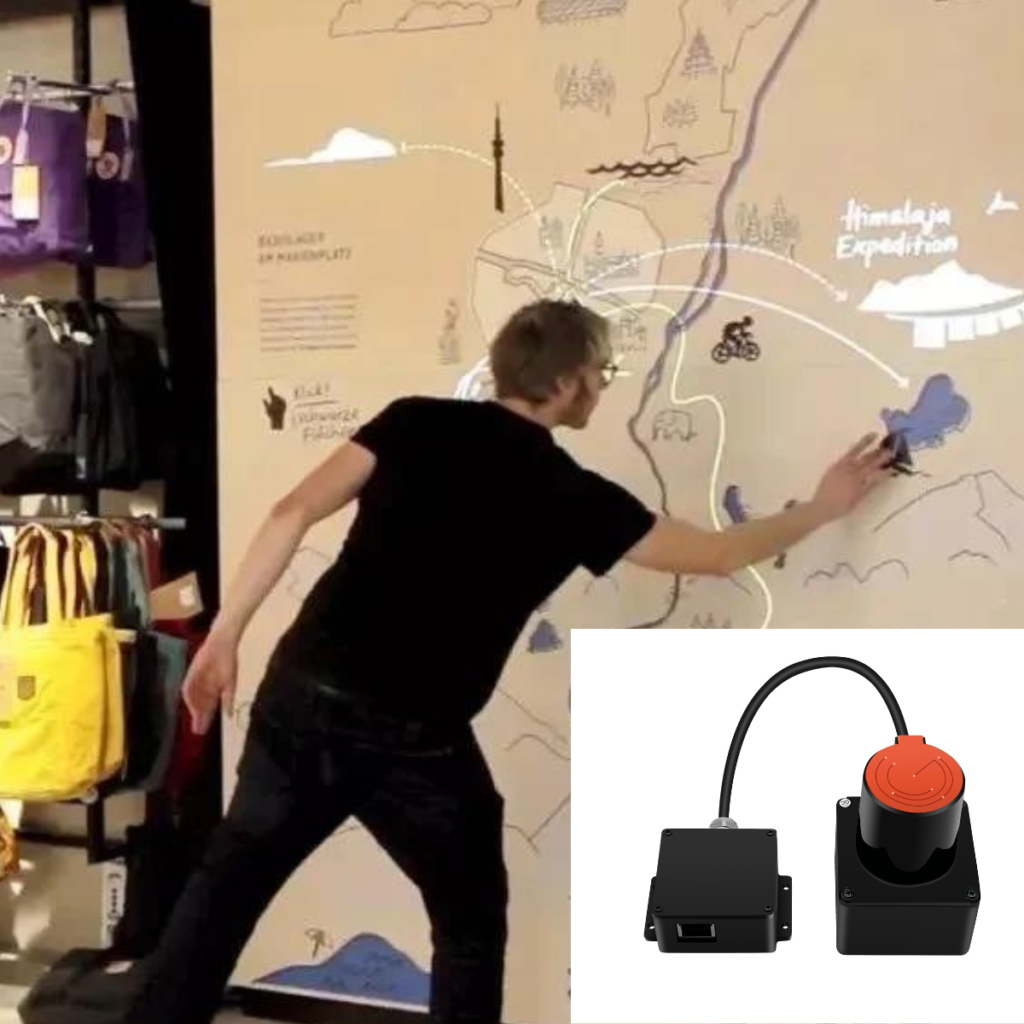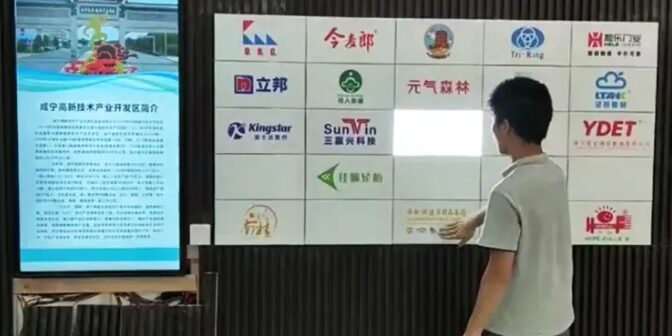Introduction
In an age where interactive experiences are becoming essential for engagement, Lidar-sensing lightbox systems are gaining popularity due to their unique functionality and seamless user interaction. These systems allow users to interact with content dynamically, enhancing their experience with real-time feedback. In this comprehensive guide, we’ll explore the workings of radar-sensing lightbox interactive systems, the role of POE LiDAR technology, and how these systems can revolutionize various industries.

What is a Radar-Sensing Lightbox Interactive System?
A Lidar-sensing lightbox interactive system combines touch-sensing technology with dynamic screen displays. When a user touches a designated lightbox, the internal lighting activates, creating a visually stunning effect. Simultaneously, a connected display screen shows relevant images or videos. This synchronized interaction elevates the display experience, providing users with a more immersive and engaging experience.
Core Features:
- Touch-sensitive lightboxes: Trigger light and display content with simple user interaction.
- Multi-layer content navigation: Easily switch between different pages and content using touch gestures.
- Seamless integration with large displays: The system projects detailed images or videos relevant to the user’s input, enhancing engagement.
The Role of POE LiDAR in Interactive Systems
POE (Power over Ethernet) LiDAR plays a critical role in the sensing technology behind these interactive lightbox systems. LiDAR (Light Detection and Ranging) is widely used for capturing real-time data about surrounding environments, and in this case, it helps detect user proximity and motion.
Benefits of Using POE LiDAR:
- Accurate motion detection: Detects precise user movements and gestures.
- Efficient power management: POE technology supplies power and transmits data over a single cable, simplifying installation and reducing clutter.
- Scalability: Easily integrated into larger systems with minimal infrastructure changes, making it suitable for complex setups such as exhibition centers or smart retail spaces.
Applications of Lidar-Sensing Lightbox Interactive Systems
These interactive systems have a wide range of applications across industries:
- Exhibition Halls: Guide visitors through exhibitions with personalized content triggered by user interaction. Display relevant videos or product details as visitors explore different sections.
- Museums and Science Centers: Provide immersive educational experiences by linking exhibits to interactive content on large screens. Touch-sensitive lightboxes can offer detailed information about artifacts or science experiments.
- Retail and Shopping Malls: Engage customers with interactive product displays. Shoppers can touch specific sections of the lightbox to see product demonstrations or detailed descriptions on nearby screens.
- Corporate Showrooms: Present company achievements or product innovations dynamically by allowing users to explore different content layers through simple interactions.
How Does the System Work?
The system comprises several key components that work together to deliver an immersive experience:
- Interactive Software: Custom-developed software enables the touch-sensitive lightboxes to control what content is displayed on the screen. Users can navigate through multiple pages with ease.
- Display Materials: Clients provide the images, videos, or layouts for the interactive displays, ensuring that the content aligns with their branding and message.
- POE LiDAR Sensors: These sensors detect user movement and trigger lightbox interactions based on proximity or touch.
- Multi-relay Outputs: A custom electrical system manages multiple outputs, ensuring that the right content is displayed when the user interacts with a specific lightbox module.
- Acrylic Panels: Custom-designed panels for each lightbox ensure durability and a visually appealing design.
- All-in-One Device: The system runs on a high-performance Windows PC, allowing for smooth operation and integration with large touch displays.
- Wiring and Accessories: USB extensions, network cables, and related wiring ensure seamless communication between system components.

How to Set Up a Lidar-Sensing Lightbox Interactive System
Setting up an interactive system requires careful planning and consideration of the user experience. Here are the steps to guide you through the installation process:
- Plan the Layout: Identify where the lightboxes and displays will be positioned to create a natural flow for user interaction.
- Select Display Content: Design or select images, videos, or other multimedia elements that will engage users and match the goals of your system.
- Install LiDAR Sensors: Integrate POE LiDAR sensors for motion detection. Ensure that the sensors cover the desired interaction area and are calibrated correctly.
- Configure Software: Customize the software to ensure that user touch triggers the correct display content. Implement multi-page navigation if necessary.
- Test the System: Test the system to ensure that all sensors, displays, and lightboxes function as expected. Fine-tune the interaction timing and content transitions for a smooth experience.
Future of Lidar-Sensing Lightbox Interactive Systems
As technology evolves, radar-sensing lightbox interactive systems are expected to expand in capabilities and applications. With advancements in POE LiDAR, these systems will offer even more precise interaction, potentially integrating with AI and machine learning to provide personalized experiences based on user behavior and preferences.
Conclusion
Lidar-sensing lightbox interactive systems, powered by POE LiDAR technology, represent the future of immersive user interaction. Their ability to engage users through seamless, touch-sensitive controls and dynamic content displays makes them a valuable tool across various industries. Whether in exhibition halls, retail spaces, or educational institutions, these systems offer a unique way to interact with digital content, enhancing user engagement and creating memorable experiences.
By following this guide, you can better understand the components, applications, and benefits of radar-sensing lightbox interactive systems and how POE LiDAR technology contributes to making them more efficient and user-friendly.
FAQs:
- What is POE LiDAR, and why is it used in these systems? POE LiDAR enables precise motion detection and proximity sensing, allowing the lightbox system to respond accurately to user inputs.
- Can this system be customized? Yes, from display content to lightbox design, the system can be tailored to fit specific needs and branding.
- Where are these systems most commonly used? Exhibition halls, museums, shopping malls, and corporate showrooms are popular locations for these systems due to their ability to enhance user engagement and interaction.







